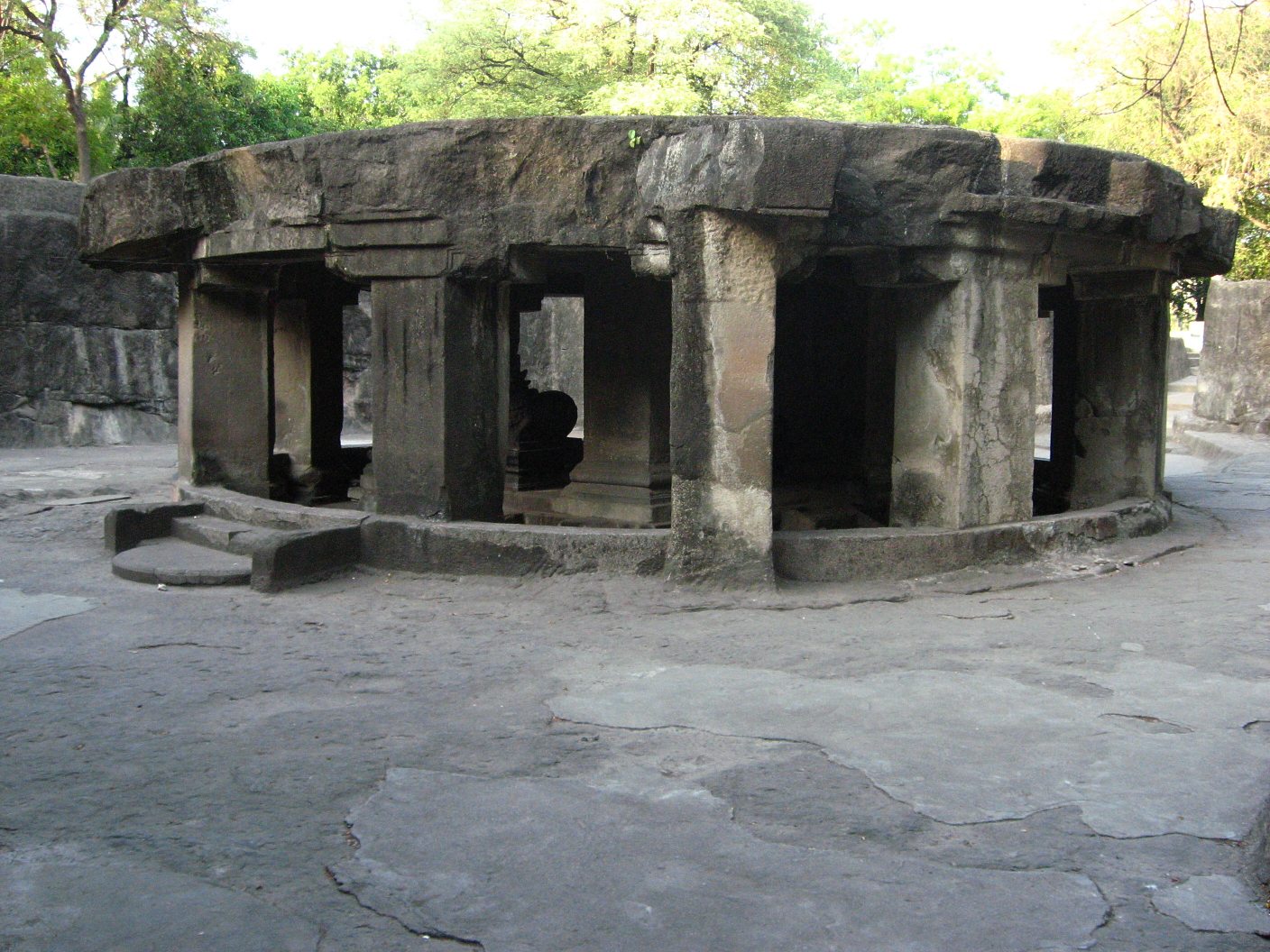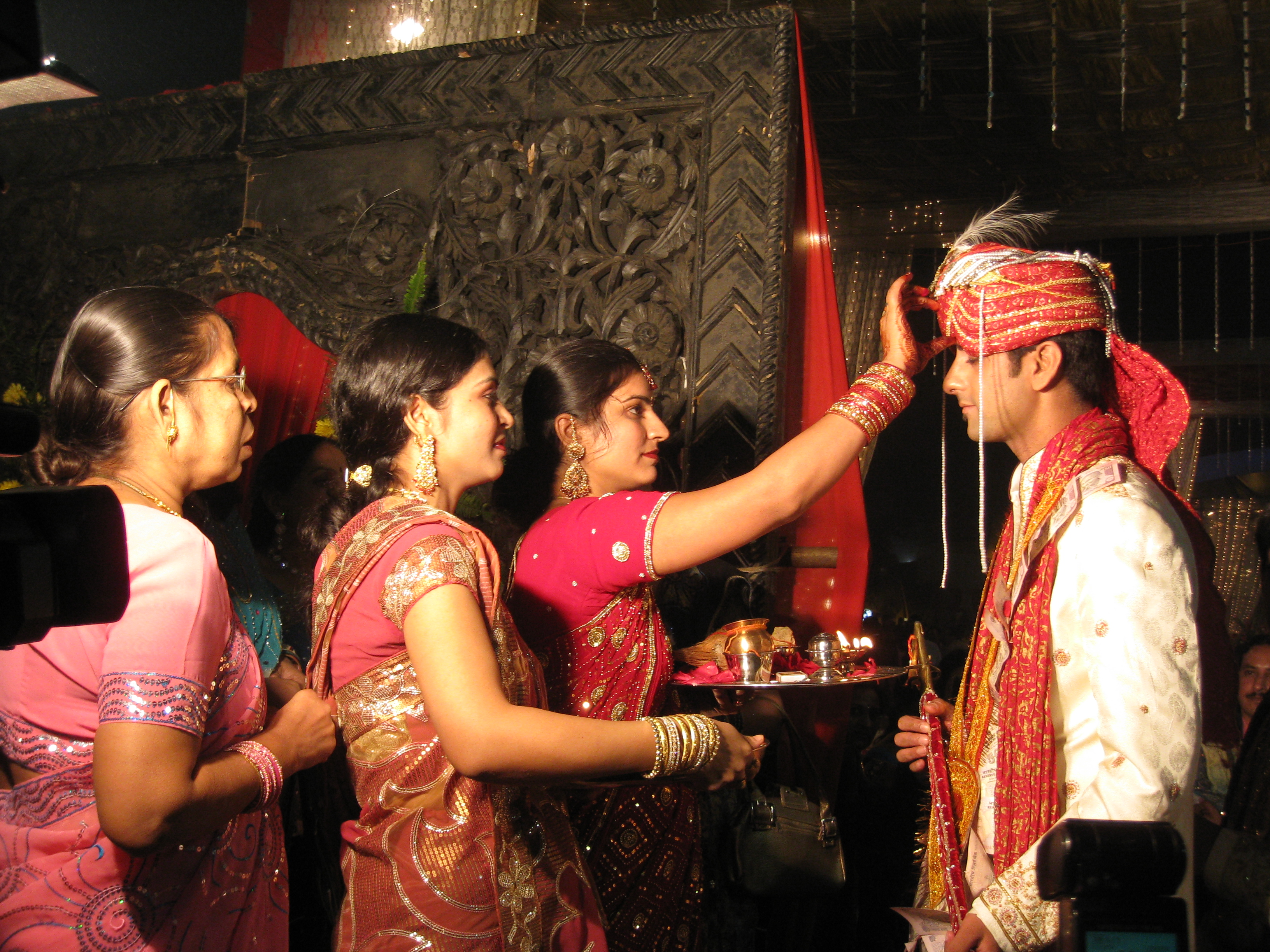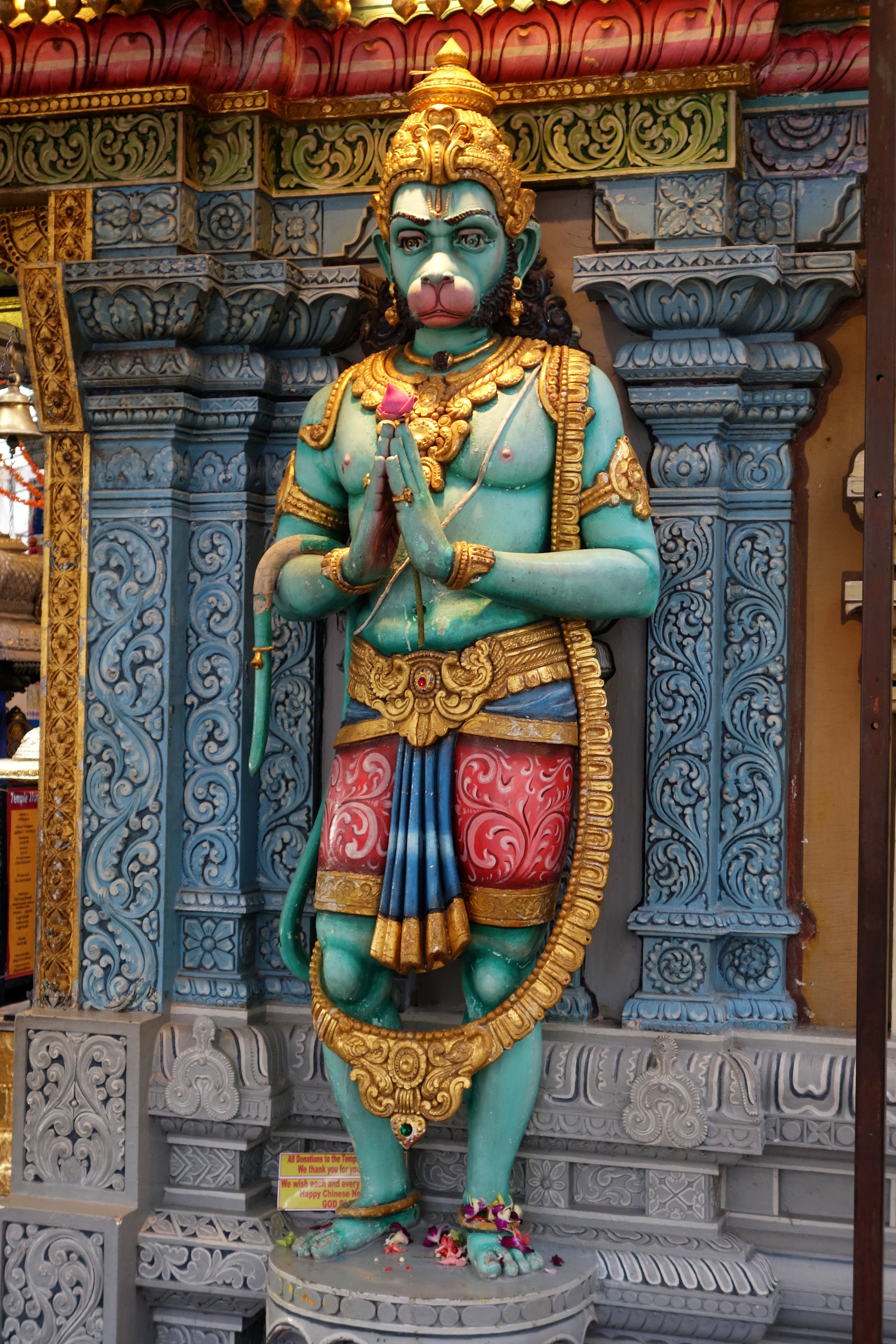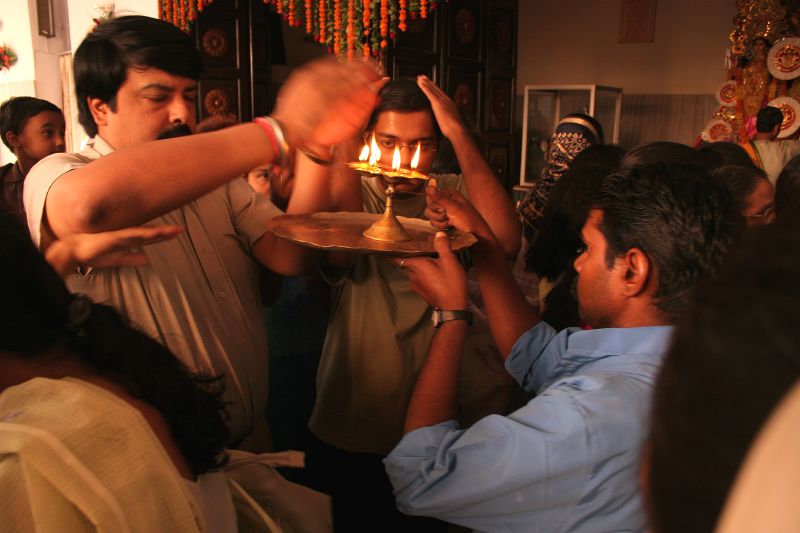|
Dashabhuja Temple
The Dashabhuja Temple is a Hindu temple in Pune, in the Maharashtra state of India. This temple was once owned by Sardar Haripant Phadke, a Sardar of Peshwa and was later donated to the Peshwas as dowry. Dashabhuja Ganapati temple is visited by thousands of devotees every day and the number increases during Ganesh Chaturthi. The idol of Ganpati or Ganesh seen here has his elephant trunk resting on his right-hand side, which is supposed to be rarer and more sacred than other forms of the Ganesh idol. Details The temple is located on Karve road, There is flyover at the juncture to facilitate the traffic going to Paud Road. Earlier there was no such flyover and the place was called Paud Phata. Paud is the name of the village on the western side on the road and "Phata" means diversion. The presiding god of the temple is Lord Ganapati also known as Ganesh. The God is having trunk on the right which is more sacred. There is small temple of Lord Hanuman besides the main temple. Every "G ... [...More Info...] [...Related Items...] OR: [Wikipedia] [Google] [Baidu] |
India
India, officially the Republic of India, is a country in South Asia. It is the List of countries and dependencies by area, seventh-largest country by area; the List of countries by population (United Nations), most populous country since 2023; and, since its independence in 1947, the world's most populous democracy. Bounded by the Indian Ocean on the south, the Arabian Sea on the southwest, and the Bay of Bengal on the southeast, it shares land borders with Pakistan to the west; China, Nepal, and Bhutan to the north; and Bangladesh and Myanmar to the east. In the Indian Ocean, India is near Sri Lanka and the Maldives; its Andaman and Nicobar Islands share a maritime border with Thailand, Myanmar, and Indonesia. Modern humans arrived on the Indian subcontinent from Africa no later than 55,000 years ago., "Y-Chromosome and Mt-DNA data support the colonization of South Asia by modern humans originating in Africa. ... Coalescence dates for most non-European populations averag ... [...More Info...] [...Related Items...] OR: [Wikipedia] [Google] [Baidu] |
Maharashtra
Maharashtra () is a state in the western peninsular region of India occupying a substantial portion of the Deccan Plateau. It is bordered by the Arabian Sea to the west, the Indian states of Karnataka and Goa to the south, Telangana to the southeast and Chhattisgarh to the east, Gujarat and Madhya Pradesh to the north, and the Indian union territory of Dadra and Nagar Haveli and Daman and Diu to the northwest. Maharashtra is the second-most populous state in India, the third most populous country subdivision in South Asia and the fourth-most populous in the world. The state is divided into 6 divisions and 36 districts. Mumbai is the capital of Maharashtra due to its historical significance as a major trading port and its status as India's financial hub, housing key institutions and a diverse economy. Additionally, Mumbai's well-developed infrastructure and cultural diversity make it a suitable administrative center for the state, and the most populous urban are ... [...More Info...] [...Related Items...] OR: [Wikipedia] [Google] [Baidu] |
Erandwane
Erandwane is a locality in Pune city. It is known for being the location of Film and Television Institute of India. It is the location for some of the most famous schools, colleges, shopping malls, restaurants, cinema halls, and hospitals in the south of Pune. Located next to Kothrud, which is home to numerous information technology companies such as Persistent Systems, Harbinger Systems, Tech Mahindra. there are numerous hostel and PG accommodations for men and women in Erandwane. Karve Road is the main road that links Erandwane with Kothrud. Marathi and English are the most commonly spoken language in the area. Prominent Places A prominent place to visit in the area is Kamala Nehru Park. Another place worth visiting is the Pune Fire Brigade Museum, the first of its kind in India. Also called Late Keshavrao Narayanrao Jagtap Fire Brigade Museum, the museum houses variety of equipment used by the fire department including more than 100 antique firefighting equipment including ... [...More Info...] [...Related Items...] OR: [Wikipedia] [Google] [Baidu] |
Pune
Pune ( ; , ISO 15919, ISO: ), previously spelled in English as Poona (List of renamed Indian cities and states#Maharashtra, the official name until 1978), is a city in the state of Maharashtra in the Deccan Plateau, Deccan plateau in Western India. It is the administrative headquarters of the Pune district, and of Pune division. In terms of the total amount of land under its jurisdiction, Pune is the largest city in Maharashtra, with a geographical area of 516.18 sq km, though List of cities in India by population, by population it comes in a distant second to Mumbai. According to the 2011 Census of India, Pune has 7.2 million residents in the metropolitan region, making it the List of metropolitan areas in India, seventh-most populous metropolitan area in India. The city of Pune is part of Pune Metropolitan Region. Pune is one of the largest IT hubs in India. It is also one of the most important Automotive industry in India, automobile and Manufacturing in India, manufacturin ... [...More Info...] [...Related Items...] OR: [Wikipedia] [Google] [Baidu] |
Ganapati
Ganesha or Ganesh (, , ), also known as Ganapati, Vinayaka and Pillaiyar, is one of the best-known and most worshipped deities in the Hindu pantheon and is the Supreme God in the Ganapatya sect. His depictions are found throughout India. Hindu denominations worship him regardless of affiliations. Devotion to Ganesha is widely diffused and extends to Jains and Buddhists and beyond India. Although Ganesha has many attributes, he is readily identified by his elephant head and four arms. He is widely revered, more specifically, as the remover of obstacles and bringer of good luck; the patron of arts and sciences; and the deva of intellect and wisdom. As the god of beginnings, he is honoured at the start of rites and ceremonies. Ganesha is also invoked during writing sessions as a patron of letters and learning., Vigna means obstacles Nasha means destroy. These ideas are so common that Courtright uses them in the title of his book, ''Ganesha: Lord of Obstacles, Lord of Beginning ... [...More Info...] [...Related Items...] OR: [Wikipedia] [Google] [Baidu] |
Hindu
Hindus (; ; also known as Sanātanīs) are people who religiously adhere to Hinduism, also known by its endonym Sanātana Dharma. Jeffery D. Long (2007), A Vision for Hinduism, IB Tauris, , pp. 35–37 Historically, the term has also been used as a geographical, cultural, and later religious identifier for people living in the Indian subcontinent. It is assumed that the term ''"Hindu"'' traces back to Avestan scripture Vendidad which refers to land of seven rivers as Hapta Hendu which itself is a cognate to Sanskrit term ''Sapta Sindhuḥ''. (The term ''Sapta Sindhuḥ'' is mentioned in Rig Veda and refers to a North western Indian region of seven rivers and to India as a whole.) The Greek cognates of the same terms are "''Indus''" (for the river) and "''India''" (for the land of the river). Likewise the Hebrew cognate ''hōd-dū'' refers to India mentioned in Hebrew BibleEsther 1:1. The term "''Hindu''" also implied a geographic, ethnic or cultural identifier for ... [...More Info...] [...Related Items...] OR: [Wikipedia] [Google] [Baidu] |
States And Territories Of India
India is a federalism, federal union comprising 28 federated state, states and 8 union territory, union territories, for a total of 36 subnational entities. The states and union territories are further subdivided into 800 List of districts in India, districts and smaller administrative divisions of India, administrative divisions by the respective subnational government. The states of India are self-governing administrative divisions, each having a State governments of India, state government. The governing powers of the states are shared between the state government and the Government of India, union government. On the other hand, the union territories are directly governed by the union government. History 1876–1919 The British Raj was a very complex political entity consisting of various imperial divisions and states and territories of varying autonomy. At the time of its establishment in 1876, it was made up of 584 princely state, constituent states and the prov ... [...More Info...] [...Related Items...] OR: [Wikipedia] [Google] [Baidu] |
Ganesh
Ganesha or Ganesh (, , ), also known as Ganapati, Vinayaka and Pillaiyar, is one of the best-known and most worshipped Deva (Hinduism), deities in the Hindu deities, Hindu pantheon and is the Supreme God in the Ganapatya sect. His depictions are found throughout India. Hindu denominations worship him regardless of affiliations. Devotion to Ganesha is widely diffused and extends Ganesha in world religions, to Jains and Buddhists and beyond India. Although Ganesha has many attributes, he is readily identified by his Asiatic Elephant, elephant head and four arms. He is widely revered, more specifically, as the remover of obstacles and bringer of good luck; the patron of The arts, arts and Science, sciences; and the Deva (Hinduism), deva of intellect and wisdom. As the god of beginnings, he is honoured at the start of rites and ceremonies. Ganesha is also invoked during writing sessions as a patron of letters and learning., Vigna means obstacles Nasha means destroy. These ideas ar ... [...More Info...] [...Related Items...] OR: [Wikipedia] [Google] [Baidu] |
Hanuman
Hanuman (; , ), also known as Maruti, Bajrangabali, and Anjaneya, is a deity in Hinduism, revered as a divine ''vanara'', and a devoted companion of the deity Rama. Central to the ''Ramayana'', Hanuman is celebrated for his unwavering devotion to Rama and is considered a '' chiranjivi''. He is traditionally believed to be the spiritual offspring of the wind deity Vayu, who is said to have played a significant role in his birth. In Shaiva tradition, he is regarded to be an incarnation of Shiva, while in most of the Vaishnava traditions he is the son and incarnation of Vayu. His tales are recounted not only in the ''Ramayana'' but also in the '' Mahabharata'' and various ''Puranas''. Devotional practices centered around Hanuman were not prominent in these texts or in early archaeological evidence. His theological significance and the cultivation of a devoted following emerged roughly a millennium after the ''Ramayana'' was composed, during the second millennium CE.Paula Richman ... [...More Info...] [...Related Items...] OR: [Wikipedia] [Google] [Baidu] |
Ganesh Chaturthi
Ganesh Chaturthi (ISO: ), also known as Vinayaka Chaturthi () or Vinayaka Chavithi () or Vinayagar Chaturthi (), is a Hindu festival celebrating the birthday of Hindu deity Ganesh. The festival is marked with the installation of Ganesha's ''murtis'' (devotional representations of a deity) privately in homes and publicly on elaborate pandals (temporary stages). Observances include chanting of Vedic hymns and Hindu texts, such as prayers and ''vrata'' (fasting). Offerings and '' prasada'' from the daily prayers, that are distributed from the pandal to the community, include sweets such as '' modak'' as it is believed to be a favourite of Ganesha. The festival ends on the tenth day after start, when the ''murti'' is carried in a public procession with music and group chanting, then immersed in a nearby body of water such as a river or sea, called ''visarjana'' on the day of Ananta Chaturdashi. In Mumbai alone, around 150,000 murtis are immersed annually. ... [...More Info...] [...Related Items...] OR: [Wikipedia] [Google] [Baidu] |
Aarti
''Arti'' () or ''Aarati'' () is a Hindu ritual employed in worship, part of a ''Puja (Hinduism), puja'', in which light from a flame (fuelled by camphor, ghee, or oil) is ritually waved to venerate Hindu deities, deities. ''Arti'' also refers to the hymns sung in praise of the deity, when the light is being offered. Sikhs have ''Arti'' ''kirtan'' which involves only devotional singing; the Nihang order of Sikhs also use light for ''arti''. Etymology and origin ''Aarti'' is thought to have descended from Historical Vedic religion, ''Vedic'' ''fire rituals or yajna''. ''Aarati'' is derived from the Sanskrit word () which means something that removes , “darkness”.James Lochtefeld, An illustrated Encyclopedia of Hinduism, , page 51 A Marathi language reference says it is also known as (). According to Steven Rosen, ''arti'' means "before night" or symbolic end of the night to the worshipper's "material sojourn - he or she is now situated in the light of God's devotion."Rosen, ... [...More Info...] [...Related Items...] OR: [Wikipedia] [Google] [Baidu] |
Anant Chaturdashi
Ananta Chaturdashi () is a festival dedicated to Vishnu, observed and celebrated by Hindus. It is marked on the fourteenth day of the moon's waxing phase during the Hindu month of Bhadrapada. According to the ''Agni Purana'', the Ananta (Shesha; the divine serpent) manifestation of Vishnu is venerated on this occasion to free adherents from sins. Ananta Chaturdashi is also marked as the last day of the ten-day-long Ganesh Chaturthi festival and is also called Ganesh Chaudas, when devotees bid adieu to the deity Ganesha by immersing (''visarjana'') his idols in water. Legend A legend behind the Ananta Chaturdashi is found in the ''Mahabharata''. It recounts the story of a woman named Sushila, who encountered a group of women worshipping Ananta near a riverbank. They explained that the performance of this vrata (pious observance) would earn great merit for the performer and offer them safety. The form of Ananta was made out of darbha (sacred grass) and placed in a basket, wh ... [...More Info...] [...Related Items...] OR: [Wikipedia] [Google] [Baidu] |







